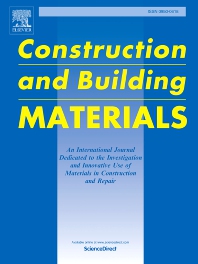Journals in Civil and structural engineering
Journals in Civil and structural engineering
- ISSN: 0266-352X
- 5 Year impact factor: 5.7
- Impact factor: 5.3
Computers and Geotechnics

- ISSN: 0950-0618
- 5 Year impact factor: 8
- Impact factor: 7.4
Construction and Building Materials

- ISSN: 0142-694X
- 5 Year impact factor: 4.1
- Impact factor: 3.2
Design Studies

- ISSN: 0925-8574
- 5 Year impact factor: 4.1
- Impact factor: 3.9
Ecological Engineering

- ISSN: 0378-7788
- 5 Year impact factor: 6.7
- Impact factor: 6.6
Energy and Buildings

- ISSN: 0955-7997
- 5 Year impact factor: 3.3
- Impact factor: 4.2
Engineering Analysis with Boundary Elements

- ISSN: 0141-0296
- 5 Year impact factor: 5.8
- Impact factor: 5.6
Engineering Structures

- ISSN: 0168-874X
- 5 Year impact factor: 3.3
- Impact factor: 3.5
Finite Elements in Analysis and Design

- ISSN: 0379-7112
- 5 Year impact factor: 3.6
- Impact factor: 3.4
Fire Safety Journal

- ISSN: 0962-7170
Fluid Abstracts: Civil Engineering

Related subjects
Analysis and design structures
Behavior of structures
Building and construction
Civil engineering general
Environmental engineering
Foundation engineering
Geotechnical engineering
Hydrodynamics
Materials in civil engineering
Numerical methods in geotechnical engineering
Numerical methods in structural engineering
Ocean and coastal engineering
Reliability engineering safety
Soil and rock mechanics
Structural engineering
Systems civil engineering
Transportation engineering
Water supply quality